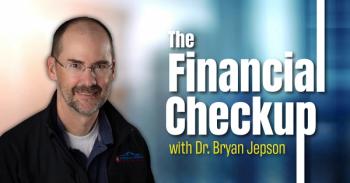
Pushing CME into the 21st century
While Continuing Medical Education (CME) and journals have kept me afloat, it is essential to find new creative ways to keep pace with the previous academic rigor of residency.
Editor's Note: Welcome to Medical Economics' blog section which features contributions from members of the medical community. These blogs are an opportunity for bloggers to engage with readers about a topic that is top of mind, whether it is practice management, experiences with patients, the industry, medicine in general, or healthcare reform. The opinions expressed here are that of the authors and not UBM / Medical Economics.
Three years removed from residency and I am already at the stage in which much of my previously up-to-date medical knowledge is starting to rust. Guidelines have been replaced and entire dogmas have been toppled. In my outpatient family medicine clinic, I have settled into the comfortable repetition of most clinical scenarios, with both the entropy to research and the rate of change seeming fairly insurmountable. While Continuing Medical Education (CME) and journals have kept me afloat, it is essential to find new creative ways to keep pace with the previous academic rigor of residency. The solution to this problem fell into my lap when during the most recent American College of Emergency Physician’s Scientific Assembly, Free Open Access Medical (FOAM) education was described as part of their new norm in the training and maintenance of certification.
At my initial glance at the conference lecture schedule, I thought the FOAM workshop would address application of some new hemostatic agent. Rather, since 2012 the international emergency medicine community has developed a growing compendium of structured, focused, and free online resources to enhance the exchange of clinical information. FOAM includes blogs, audio and video podcasts, tweets, and posts that are generated and shared by a community of experts and enthusiasts. The goal is quality of education, not quantity. Given that studies show that typical time of absorption of information in most learning settings tends to saturate at about fifteen minutes, most FOAM material is constructed to be rapid and high yield. An example of FOAM is a ten-minute audio podcast, constructed with some brief slides that explore an updated clinical guideline as well as a clinical case for application. FOAM serves both as a way to disseminate core content, but more importantly as an adjunct to textbooks to strengthen understanding of nuanced content or to dive into unusual clinical scenarios.
While the concept of online medical education itself is not new, the key innovations in FOAM are: accessibility, the growing compendium of resources, and the focus on fostering a sharing community. For those concerned about the credibility and quality of FOAM, online communities have created and continue to hone pathways for peer review of audio, video, blogs and posts that mirror peer review of journals and textbooks. Meanwhile, research is underway to devise validated quality identification tools to provide indicators for reliability of resources.
As a family physician, I have few online resources that I have found for digital CME. While my audible.com account is jam-packed with nearly 1000 audiobooks and my iTunes podcast repertoire is continually brimming with new content, I struggle to find any robust, let alone free and accessible, resource for digital medical updates.
It is hard to argue with something that is free and can be consumed while commuting or folding laundry. Beyond ease of use, however, these platforms offer access to answers that are not immediately available in any traditional form of education. They connect learners and experts alike and provide a shared forum for collaboration and spread of medical knowledge. To take things a step further, they allow the potential for a greater standardization of education and curricula. Imagine if the international expert on thyrotoxicosis, for example, were to design a brief FOAM review and this was integrated into every internal medicine residency didactic course. This could supplant the hundreds of Powerpoint presentations that are created in parallel at individual residency programs, often designed during administrative time by faculty. The same could be applied to the nuances of medical school and would result in efficient, expert, and cost-saving education.
I still love the feel of paper between my fingertips and the hum of a highlighter moving across text. Further, face-to-face sessions and on-site teaching go beyond the conveyance of facts alone, as they support team building, role-modeling and mentorship. Thus, I do not envision a world in which the digital surpasses the tangible in medical education. Rather, I see FOAM as a new tool in our learning and teaching tool boxes. It is one that enhances our current medical education models, and expands how we obtain, consolidate, and integrate information to improve the health of our nation and beyond.
Aaron George, DO, is a family physician practicing in his hometown of Chambersburg, Penn. He was an Andlinger fellow in health policy with the Center for Public Health in Vienna, Austria, and has been awarded both the Bristol-Myers Squibb award for excellence in graduate medical education, as well as recently named one of the 40 under 40 physicians by the Pennsylvania Medical Society.
Newsletter
Stay informed and empowered with Medical Economics enewsletter, delivering expert insights, financial strategies, practice management tips and technology trends — tailored for today’s physicians.














